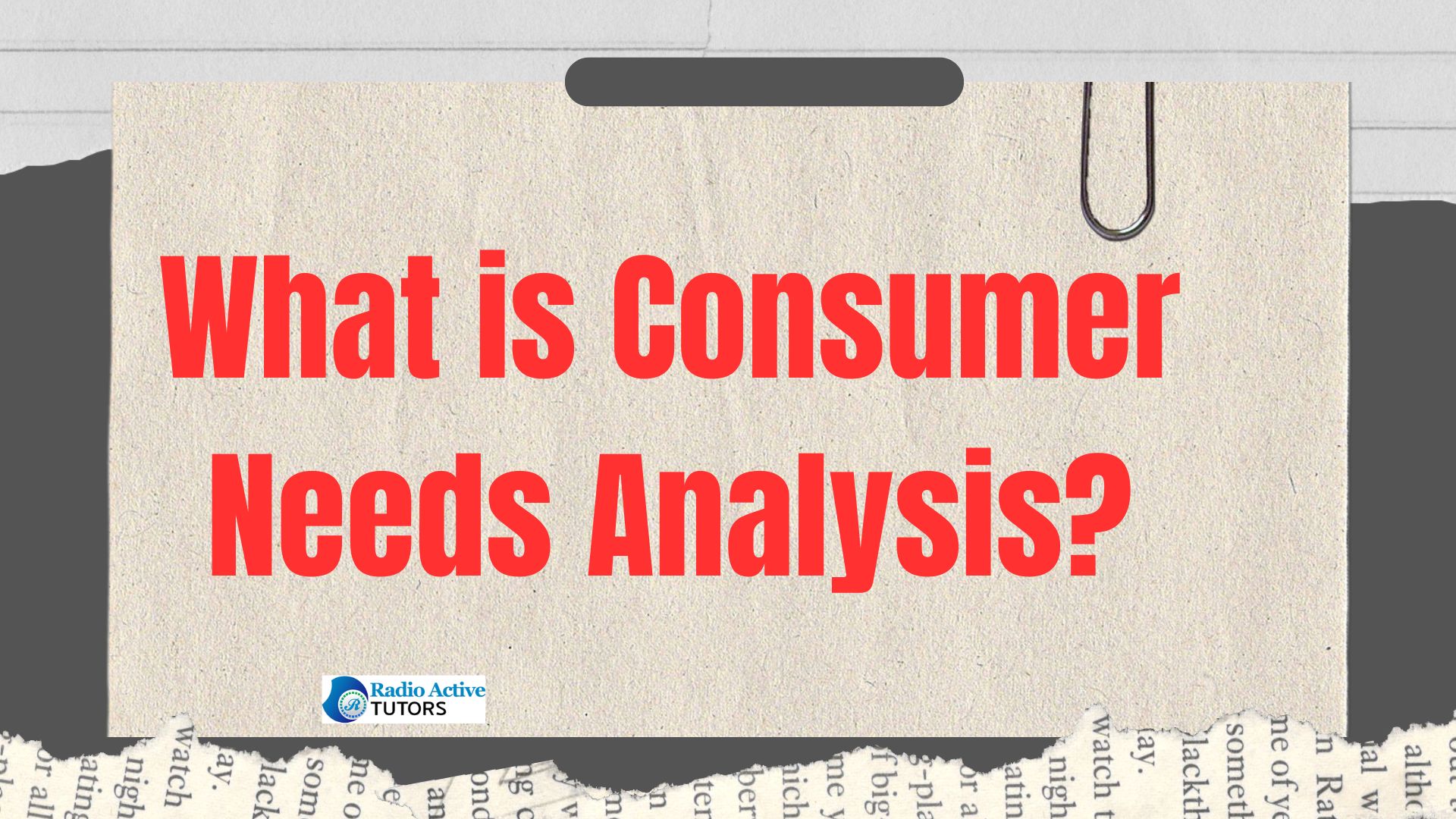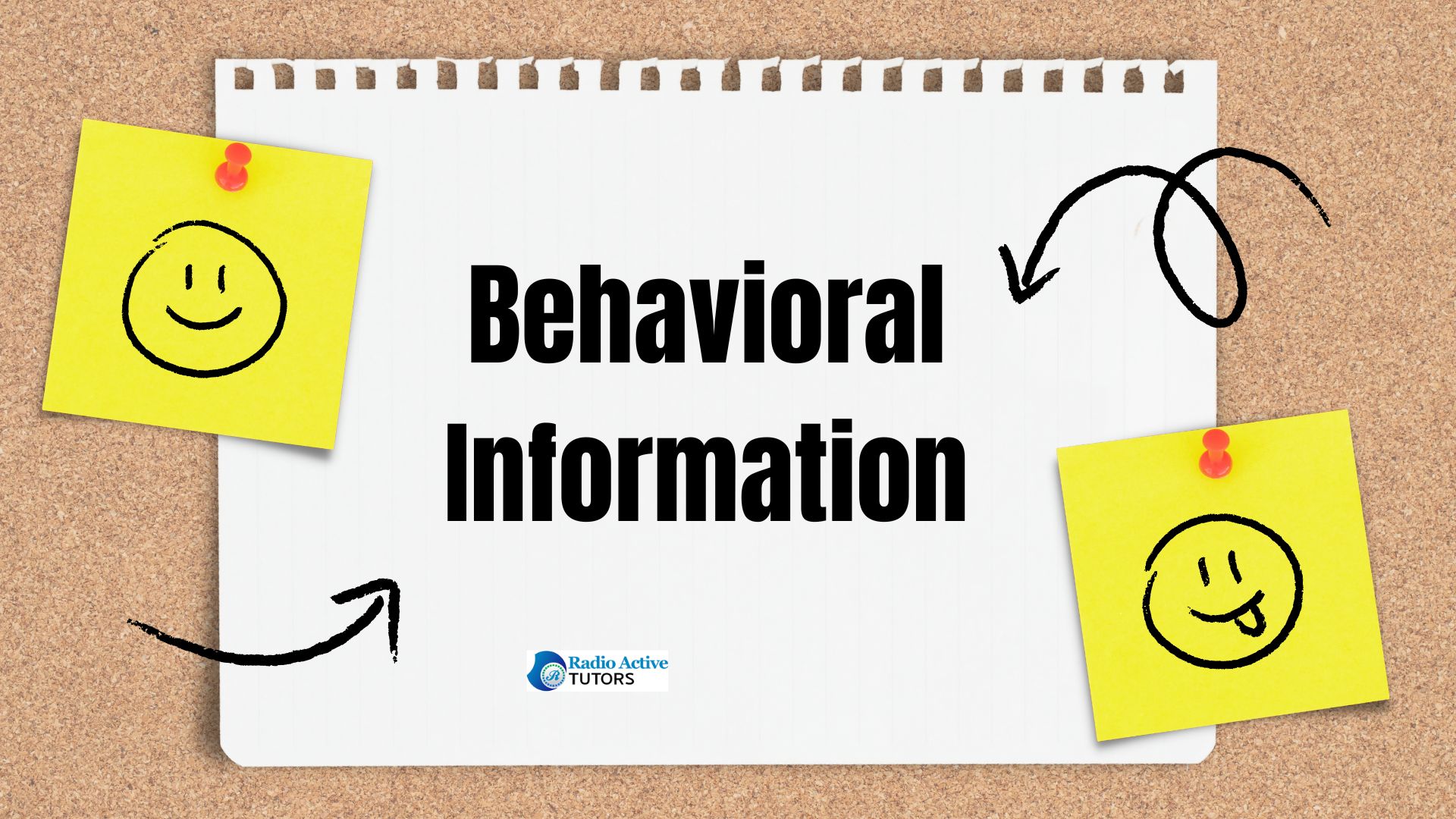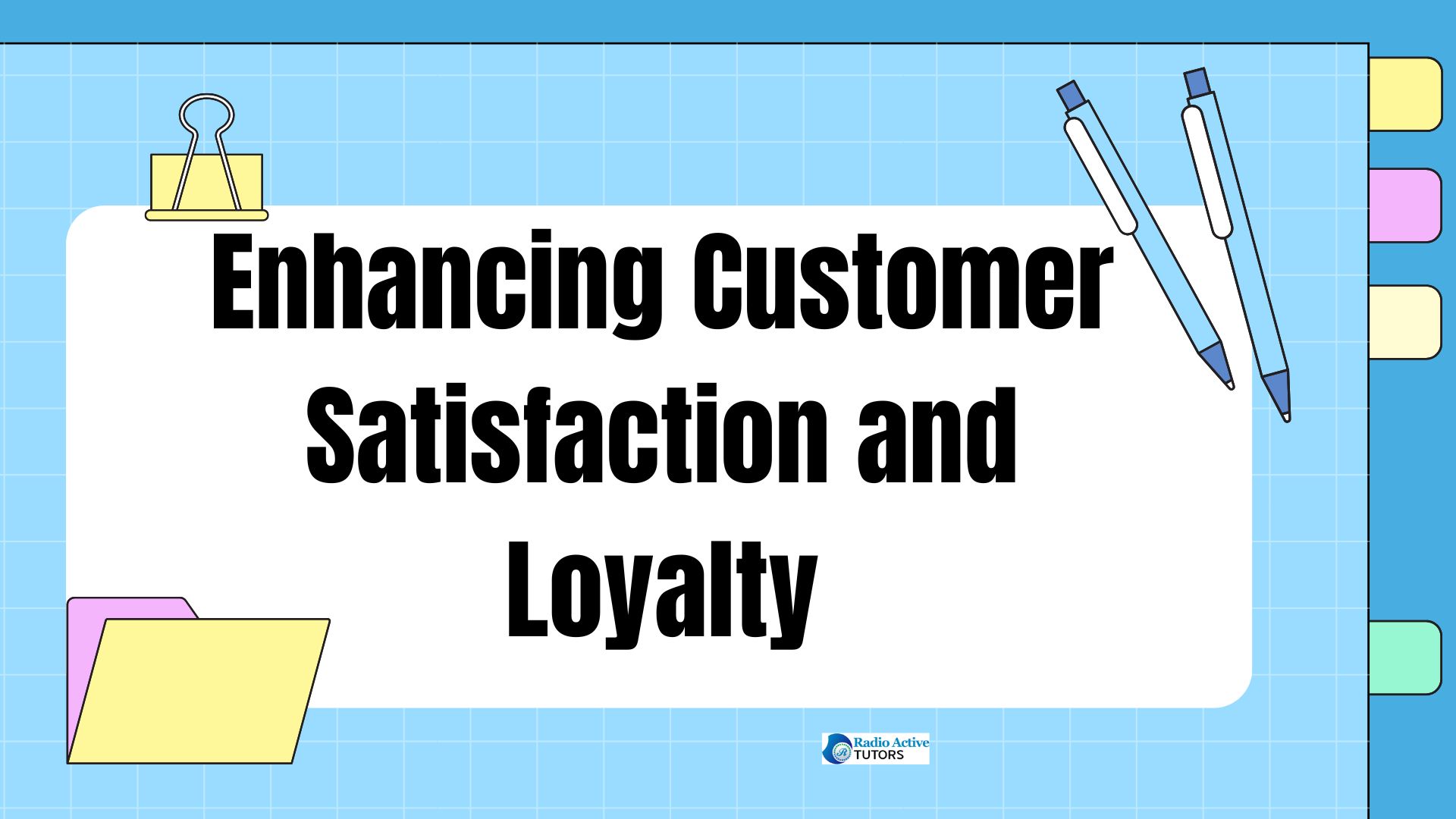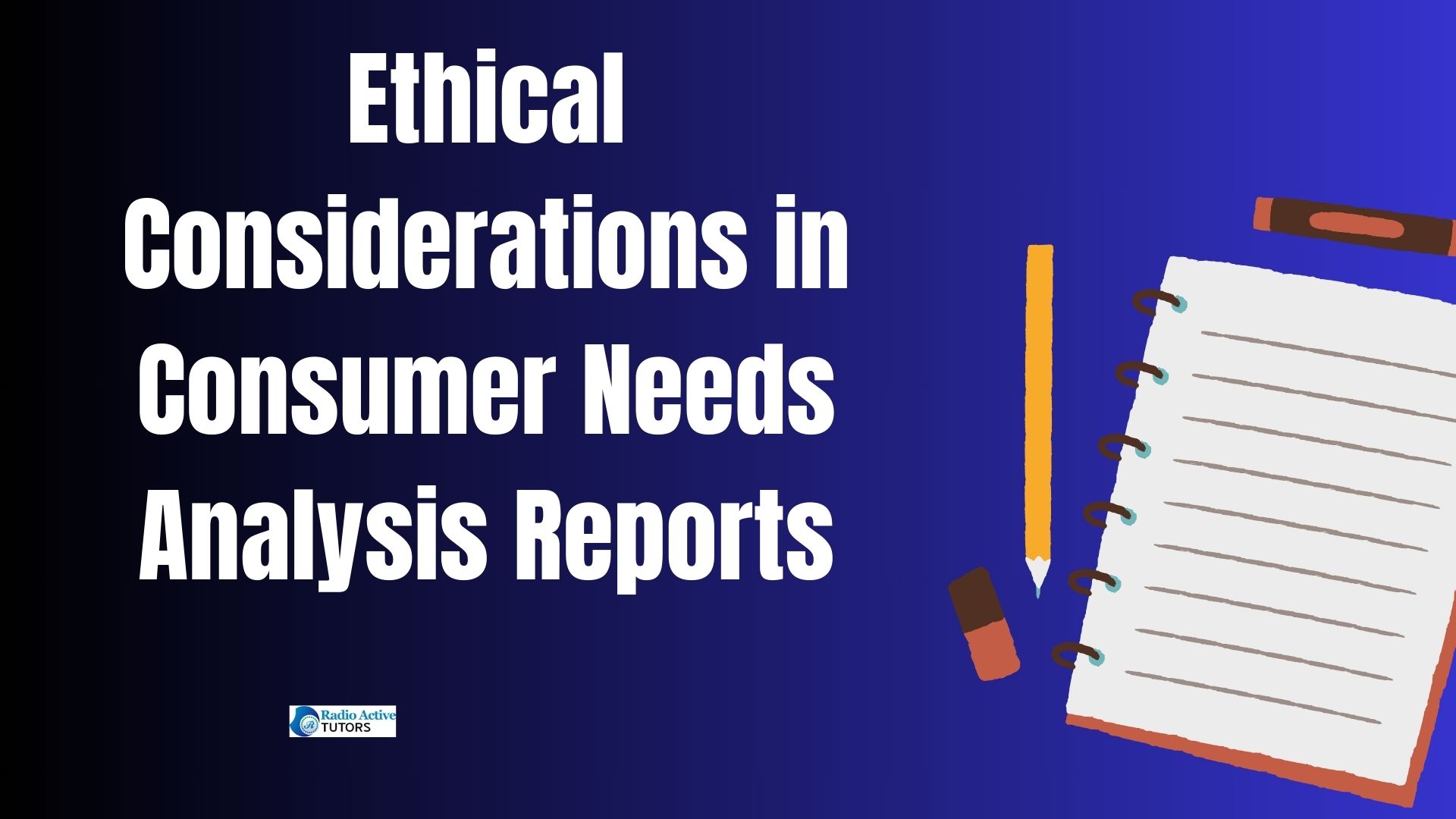Table of Contents
- I. Introduction to Consumer Needs Analysis Reports
- II. Components of Consumer Needs Analysis Reports
- III. Tools and Techniques for Consumer Needs Analysis Reports
- IV. Conducting Effective Consumer Needs Analysis
- V. Using Consumer Needs Analysis Reports to Improve Products/Services
- VI. Case Studies: Successful Applications of Consumer Needs Analysis Reports
- VII. Best Practices for Creating Consumer Needs Analysis Reports
- VIII. Ethical Considerations in Consumer Needs Analysis Reports
- IX. FAQs about Consumer Needs Analysis Reports
I. Introduction to Consumer Needs Analysis Reports
- What is Consumer Needs Analysis?

Consumer Needs Analysis is a systematic examination of the desires, expectations, and requirements of consumers in a particular market or demographic. It involves gathering and analyzing data to identify the essential needs and preferences of consumers, which are crucial for the development and marketing of products or services. This process helps businesses understand their target audience better, enabling them to tailor their offerings to meet consumer demands effectively. By conducting thorough consumer needs analysis, companies can gain insights into what drives consumer behavior, allowing them to make informed decisions that enhance customer satisfaction and loyalty.
- Importance of Consumer Needs Analysis Reports
Consumer Needs Analysis Reports are vital tools for businesses aiming to understand and meet the expectations of their customers effectively. These reports provide valuable insights into consumer preferences, desires, and behavior patterns, helping companies to align their products and services with market demands. By comprehensively analyzing consumer needs, businesses can identify opportunities for innovation, optimize their marketing strategies, and enhance customer satisfaction. This understanding enables organizations to stay competitive in the market by delivering products and services that meet or exceed consumer expectations.
Moreover, consumer needs analysis reports help in building stronger relationships with customers, fostering loyalty, and ultimately driving business growth. Thus, these reports play a pivotal role in shaping strategic decisions and ensuring long-term success in today’s dynamic business environment.
- How Businesses Use Consumer Needs Analysis Reports
Businesses utilize Consumer Needs Analysis Reports in various strategic ways to better understand and serve their target audience. These reports provide crucial insights into consumer behavior, preferences, and expectations, enabling companies to tailor their products and services more effectively. By analyzing these reports, businesses can identify emerging market trends, anticipate shifts in consumer demand, and innovate accordingly.
Moreover, the data from consumer needs analysis reports inform marketing strategies, helping companies to create targeted campaigns that resonate with their audience. Additionally, these reports aid in product development, ensuring that new offerings address genuine consumer needs and provide solutions that meet customer expectations. Ultimately, businesses leverage consumer needs analysis reports to enhance customer satisfaction, build brand loyalty, and maintain a competitive edge in the market.
II. Components of Consumer Needs Analysis Reports
Demographic information is a crucial component of Consumer Needs Analysis Reports, providing essential insights into the characteristics and preferences of different consumer groups. This data includes factors such as age, gender, income level, education, occupation, and geographic location. By analyzing demographic information, businesses can segment their target market effectively and tailor their products and marketing strategies to meet the specific needs of each demographic group.
Understanding demographics helps companies identify trends and patterns in consumer behavior, allowing for more precise targeting and messaging. Moreover, demographic data informs decisions on product design, pricing, distribution channels, and customer service strategies. Overall, demographic information is integral to Consumer Needs Analysis Reports as it enables businesses to develop more relevant and impactful strategies that resonate with their target audience.
- Psychographic Information
Psychographic information is a vital component of Consumer Needs Analysis Reports, offering deep insights into the attitudes, values, lifestyles, and interests of consumers. This data goes beyond basic demographics to uncover the motivations and psychological factors that influence consumer behavior. By analyzing psychographic information, businesses can create detailed consumer profiles that help in segmenting their market based on shared interests and behaviors. This allows companies to develop highly targeted marketing campaigns and personalized product offerings that resonate with specific consumer segments.
Understanding psychographics enables businesses to anticipate consumer needs and preferences more accurately, fostering stronger relationships and enhancing customer loyalty. Ultimately, psychographic information in Consumer Needs Analysis Reports plays a crucial role in crafting strategies that effectively engage and satisfy the diverse interests and motivations of consumers.

Behavioral information is a critical component of Consumer Needs Analysis Reports, providing valuable insights into how consumers interact with products or services. This data includes purchase history, buying patterns, brand loyalty, usage frequency, and decision-making processes. By analyzing behavioral information, businesses can identify trends and patterns in consumer behavior, enabling them to tailor their marketing strategies and product offerings more effectively.
Understanding consumer behavior helps companies predict future trends, optimize pricing strategies, and improve customer service experiences. Moreover, behavioral information allows businesses to segment their market based on actual consumer actions and preferences rather than assumptions. This data-driven approach enables companies to make informed decisions that enhance customer satisfaction and drive business growth. Therefore, behavioral information in Consumer Needs Analysis Reports is crucial for businesses aiming to create impactful strategies that meet the evolving needs of their target audience.
III. Tools and Techniques for Consumer Needs Anaslysis Report
Consumer Needs Analysis Reports utilize a variety of tools and techniques to gather and interpret data effectively. Quantitative methods such as surveys, questionnaires, and statistical analysis are commonly used to quantify consumer preferences, behaviors, and satisfaction levels. These tools provide numerical data that can be analyzed to identify trends and patterns across different consumer segments. Qualitative methods, including interviews, focus groups, and ethnographic research, offer deeper insights into consumer motivations, emotions, and perceptions.
These techniques involve gathering detailed, nuanced information that helps businesses understand the underlying reasons behind consumer behaviors. Additionally, tools like customer journey mapping and sentiment analysis are used to visualize and interpret the overall customer experience and sentiment towards products or services. Advanced analytical tools and software, such as data mining and predictive analytics, are also employed to forecast future consumer trends and behaviors based on historical data. By leveraging a combination of these tools and techniques, businesses can conduct comprehensive Consumer Needs Analysis that informs strategic decisions and drives continuous improvement in products, services, and customer satisfaction.
IV. Conducting Effective Consumer Needs Analysis
Setting objectives is essential in conducting effective Consumer Needs Analysis. Clear objectives help to define the scope and focus of the analysis, ensuring that efforts are targeted towards understanding specific aspects of consumer behavior or preferences. Objectives might include identifying unmet consumer needs, gaining insights into purchasing patterns, or evaluating customer satisfaction levels. By setting objectives, businesses can prioritize their research efforts and allocate resources effectively.
Moreover, clear objectives provide a framework for interpreting the data collected and for making informed decisions based on the findings. This approach ensures that Consumer Needs Analysis Reports are not only comprehensive but also actionable, enabling businesses to develop strategies that meet consumer expectations and enhance overall business performance.
Designing the research process is crucial for conducting effective Consumer Needs Analysis. It involves selecting appropriate methodologies and techniques to gather relevant data that aligns with the objectives of the analysis. The research design should consider factors such as the target audience, the scope of the analysis, and the type of insights needed. For example, methods such as surveys, focus groups, interviews, and observational studies may be employed to collect qualitative and quantitative data. Careful consideration should also be given to sampling techniques to ensure that the data collected is representative of the target consumer group.
Additionally, designing the research involves creating structured approaches to data collection and analysis to ensure consistency and reliability. By carefully designing the research process, businesses can ensure that their Consumer Needs Analysis Reports provide valuable insights that inform strategic decisions and drive improvements in products, services, and customer satisfaction.

Collecting data is a fundamental step in conducting effective Consumer Needs Analysis. Businesses utilize various methods to gather information about consumer preferences, behaviors, and expectations. This process often involves collecting both qualitative and quantitative data through surveys, interviews, focus groups, and observational studies. Qualitative methods allow businesses to gain deeper insights into consumer motivations and perceptions, while quantitative methods provide statistical data on trends and patterns. It’s essential to ensure that data collection methods are chosen based on the research objectives and the characteristics of the target audience.
Moreover, businesses must consider ethical considerations such as obtaining informed consent, protecting consumer privacy, and using data responsibly. By systematically collecting data, businesses can develop a comprehensive understanding of consumer needs, which serves as a foundation for making informed decisions and improving products, services, and customer experiences.
Analyzing data is a critical phase in conducting effective Consumer Needs Analysis. Businesses use various analytical techniques to interpret the data collected from surveys, interviews, focus groups, and other sources. This process involves organizing and examining the data to identify patterns, trends, and insights that provide a deeper understanding of consumer preferences and behaviors. Statistical analysis, such as regression analysis, clustering, and correlation analysis, may be used to uncover relationships between variables and to quantify the significance of findings.
Qualitative data is often analyzed through thematic analysis or content analysis to identify recurring themes and insights. The goal of data analysis in Consumer Needs Analysis is to transform raw data into actionable insights that inform strategic decisions. Businesses can use these insights to prioritize product improvements, tailor marketing strategies, and enhance customer experiences. Moreover, thorough data analysis ensures that Consumer Needs Analysis Reports are comprehensive, accurate, and valuable for guiding business decisions and strategies.
V. Using Consumer Needs Analysis Reports to Improve Products/Services
- Tailoring Products/Services to Customer Needs
Using Consumer Needs Analysis Reports to improve products and services involves tailoring offerings to meet specific customer needs, which is crucial for enhancing customer satisfaction and loyalty. By analyzing consumer preferences, behaviors, and feedback, businesses can gain a deeper understanding of what their customers value most. This understanding enables companies to customize their products or services to better align with customer expectations and desires. Whether it’s adjusting product features, improving service delivery, or optimizing pricing strategies, businesses can make informed decisions that resonate with their target audience.
By tailoring products and services to customer needs identified through consumer needs analysis reports, businesses can create more personalized and relevant experiences for their customers. This approach not only increases customer satisfaction but also strengthens relationships with customers, leading to higher retention rates and positive word-of-mouth. Ultimately, aligning offerings with customer needs helps businesses to maintain a competitive edge and drive long-term growth in the market.
- Innovating Based on Consumer Insights
Using Consumer Needs Analysis Reports to improve products and services involves innovating based on consumer insights, which is essential for staying competitive in the market. By carefully analyzing consumer preferences, behaviors, and trends, businesses can uncover opportunities for innovation and product development. Consumer needs analysis reports provide valuable data that highlight gaps in the market or areas where current offerings can be improved. This insight allows businesses to innovate by creating new products or enhancing existing ones to better meet consumer demands. Innovating based on consumer insights not only addresses specific consumer needs but also allows companies to differentiate themselves from competitors and attract new customers.
Moreover, this approach fosters a culture of continuous improvement, where businesses can adapt quickly to changing consumer preferences and stay ahead of market trends. Ultimately, using Consumer Needs Analysis Reports to innovate based on consumer insights leads to the development of products and services that are more relevant, desirable, and valuable to customers, thereby driving business growth and success.
- Enhancing Customer Satisfaction and Loyalty

Using Consumer Needs Analysis Reports to improve products and services can significantly enhance customer satisfaction and loyalty. By analyzing consumer preferences, behaviors, and feedback, businesses can identify areas where their products or services can be enhanced or refined to better meet customer needs. This process ensures that products are developed with a deep understanding of what customers value most, thereby increasing the likelihood of customer satisfaction. Moreover, by addressing customer needs and preferences, businesses can build stronger relationships with their customers, fostering loyalty and advocacy.
When customers feel that a company listens to their needs and consistently delivers products and services that align with their expectations, they are more likely to remain loyal and continue supporting the brand. Therefore, leveraging Consumer Needs Analysis Reports to improve products and services not only drives customer satisfaction but also strengthens customer loyalty, ultimately contributing to long-term business success.
VI. Case Studies: Successful Applications of Consumer Needs Analysis Reports
Case studies illustrate successful applications of Consumer Needs Analysis Reports across various industries. For instance, a leading tech company used consumer needs analysis to develop a new smartphone model that met specific demands for longer battery life and enhanced camera features. By analyzing consumer preferences and behaviors, they were able to identify these critical needs and prioritize them in their product design.
Another example includes a retail chain that used consumer needs analysis to optimize their store layouts and product assortments based on demographic and psychographic insights. This resulted in increased customer satisfaction and higher sales. Additionally, a healthcare provider used consumer needs analysis to enhance their patient experience by personalizing treatment plans and improving communication strategies. These case studies highlight the diverse ways in which businesses can leverage consumer needs analysis reports to innovate, improve customer satisfaction, and drive business success.
VII. Best Practices for Creating Consumer Needs Analysis Reports
- Integrating Multiple Data Sources
Best practices for creating Consumer Needs Analysis Reports emphasize the integration of multiple data sources to provide a comprehensive understanding of consumer preferences and behaviors. By combining demographic, psychographic, and behavioral data, businesses can develop a more holistic view of their target audience. This integration allows companies to identify correlations and patterns across different datasets, providing deeper insights into consumer motivations and purchasing decisions. Moreover, leveraging multiple data sources helps in validating findings and reducing bias, ensuring that strategic decisions are based on accurate and reliable information.
By adopting this approach, businesses can create more targeted marketing campaigns, optimize product development efforts, and enhance overall customer satisfaction. Integrating multiple data sources in Consumer Needs Analysis Reports thus enables businesses to stay agile and responsive to the dynamic market landscape, driving long-term success and competitive advantage.
- Collaborating Across Departments
In the realm of creating Consumer Needs Analysis Reports, collaborating across departments is a crucial best practice that fosters a comprehensive understanding of consumer behaviors and preferences. By bringing together insights from marketing, product development, sales, and customer service teams, businesses can gain a more holistic view of their customers. This collaboration enables departments to share data, perspectives, and expertise, which helps in identifying nuanced consumer trends and preferences.
Moreover, cross-departmental collaboration ensures that insights are interpreted in context, facilitating more accurate and actionable recommendations. This approach not only enhances the quality and depth of Consumer Needs Analysis Reports but also promotes alignment across the organization in terms of strategy and decision-making. Ultimately, collaborating across departments in the creation of Consumer Needs Analysis Reports empowers businesses to develop more targeted and effective approaches to meeting consumer needs and driving business growth.
VIII. Ethical Considerations in Consumer Needs Analysis Reports

Ethical considerations in Consumer Needs Analysis Reports are paramount, particularly when it comes to privacy concerns. Collecting and analyzing consumer data should be done with utmost respect for privacy and confidentiality. Businesses must ensure that they obtain consent from consumers before gathering their personal information and should clearly communicate how this data will be used.
Moreover, it’s crucial to anonymize and aggregate data whenever possible to protect individual identities. Transparency in data collection and processing practices is essential to build and maintain trust with consumers. Businesses should also adhere to relevant data protection regulations and industry standards to safeguard consumer privacy. Ethical considerations in Consumer Needs Analysis Reports require a balance between gathering valuable insights and respecting the privacy rights of consumers, ensuring that their data is used responsibly and ethically.
- Transparency in Data Collection
Transparency in data collection is a fundamental ethical consideration in Consumer Needs Analysis Reports. It involves providing clear and accessible information to consumers about how their data is being collected, used, and stored. Businesses should communicate the purpose of data collection, the types of data being collected, and any third parties with whom the data may be shared. This transparency helps to build trust with consumers by allowing them to make informed decisions about sharing their personal information. It’s important for businesses to use plain language and avoid misleading or deceptive practices in their communications about data collection.
Additionally, businesses should offer consumers choices and control over their data whenever possible, such as opt-in or opt-out mechanisms. Transparency in data collection not only demonstrates ethical business practices but also ensures compliance with privacy laws and regulations, ultimately fostering a positive relationship with consumers based on trust and respect.
- Ethical Use of Consumer Data
The ethical use of consumer data is paramount in Consumer Needs Analysis Reports. Businesses have a responsibility to use consumer data in a manner that respects privacy, maintains confidentiality, and adheres to legal and regulatory requirements. This includes ensuring that data is collected with consumer consent, used only for the purposes disclosed, and securely stored to prevent unauthorized access. Moreover, businesses should avoid using consumer data in ways that could harm individuals or exploit vulnerabilities. It’s important to prioritize the protection of sensitive information and to anonymize or aggregate data wherever possible to minimize risks to consumer privacy.
Ethical considerations in the use of consumer data also include transparency in data practices and providing consumers with meaningful choices and control over their data. By upholding ethical standards in Consumer Needs Analysis Reports, businesses can build trust with consumers and demonstrate their commitment to responsible data management practices.
IX. FAQs about Consumer Needs Analysis Reports
- What is a consumer needs analysis report?
- What is a consumer needs analysis?
- How do you conduct consumer needs analysis?
- What are the benefits of conducting consumer needs analysis?
- What are the different types of consumer needs?
- How do you create a consumer needs analysis report?
- What are the challenges in consumer needs analysis?
- How can businesses use consumer needs analysis to improve products/services?
- What role does technology play in consumer needs analysis?
- What are some best practices in consumer needs analysis?
- What are the ethical considerations in consumer needs analysis?
